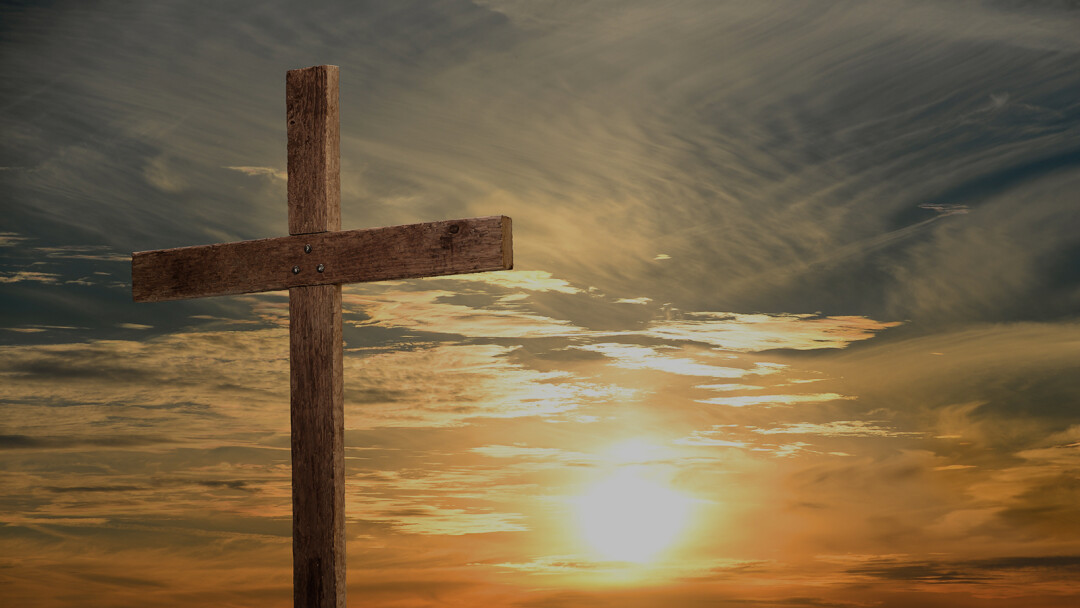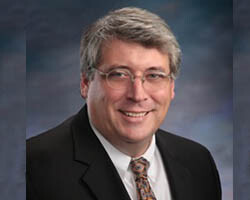Tacit Truth

In 1958 this sanctuary was remodeled. The façade was refashioned in the neo-classical style with Corinthian columns and a triangular portico like a Greek temple. Inside the sanctuary paneling was added, a new ceiling with brass lights and an arch behind the raised pulpit and choir loft. At the dedication service the pastor at the time, Dr. Behrenberg, noted the changes this way
First, he lamented the previous form of the sanctuary. In his less than subtle way he said, it is unfortunate that our parents built ugly churches. Pretty sure that was meant as a negative critique. And then he said, but now, here, we have beauty without ostentation. Beauty without ostentation. There is a lot being inferred in that statement as well as his appraisal of prior American protestant architecture as ugly.
To understand the appraisal, we need to remember where we came from. Protestants came from Europe, where for the most part, we took over or were given Gothic Cathedrals. Protestantism began in cities, often Imperial Cathedral cities, where the Roman Catholic Church was asked to leave, and a reform occurred led by the gospelers as we were then called. When Protestants took over the Gothic cathedrals in Bern, Zurich, Geneva, for example, they got rid of the statues and holy water fountains, they often smashed the stained-glass and removed the choir screens. Anything of beauty, ostentation, that could be removed was taken away. Yet, the basic form of the church, the Gothic style, remained.
A century later as the protestants came to the colonies, they left these cathedrals behind and were able to build something new, something that reflected their sensibilities. Essentially, they built barns. Think long rectangles with a pitched roof. They sought pure utility. Clear glass, no color, no embellishment. This is what Dr. Behrenberg called ugly.
The second comment, beauty without ostentation, was most likely a reference to the rebirth of the Gothic in American church architecture. After the civil war until the 1950s churches in America were rebuilt, refurbished, built new to appear as if they were 800 years old. In place of the purely functional barn came spires and turrets and ribbed arches and ambulatories. There were stained-glass windows; some even had gargoyles.
Church architecture changes, sometimes dramatically. Yet, unless you are there to see the change, unless you were in the sanctuary prior to 1958, you would never consider the difference. There is a sensibility in church architecture that it has always been there; it is ancient, centuries old, even if it was built only decades ago.
Perhaps it is the sense of permanence that causes members such trepidation when change to the architecture is considered. In a very un-Protestant fashion, we see the form of the church as sacred, the walls and doors and windows and even the color of the carpets somehow become something holding spiritual power.
I remember seeing pictures of the sanctuary of a former congregation. The interior of the sanctuary was painted a hideous brown, drab, and ugly. It was repainted in the 1990s a light salmon with cream colored trim. Beautiful. I was experienced enough to keep my opinions to myself when an older member of the church referred to the new color as hideous, ridiculous, ugly. And then she said, “I almost left the church. I hate the color so much I almost never came back.”
I also remember seeing the architectural plans for that same church when it was renovated in the 1920s. This was fascinating as there were two options. The first is what we have here: a neo-classical Greek temple, beauty without ostentation. The second option was to wrap the church in stone, build turrets and spires and have colonnaded arches: Gothic. In the end the congregation went Greek instead of Gothic, but many churches at the time chose the opposite.
Both options should give a moment of pause. Why would a small farming community outside of New York City in the 1950s remodel their functional worship space to resemble an ancient Greek temple? There is a reason why we have a large triangle on the front of the sanctuary. There is a reason, but it is hard to say because who can imagine it as other? And why would Princeton University remake their entire campus as a medieval village replete with towers and turrets? Why cover the buildings in stone, build arches, windows to seem so old?
When I take people through the campus of Princeton University, I always take them to the city gate that was built on the western edge of the campus. This village gate has an enormous turret towering above; it is replete with notches for arches. That it was built at the end of the 19th century is something that should give us pause. Why would a college in America build a turret for defense where arches can shoot arrows down on attackers at the beginning of the 20th century? Quite a twist on the current debate of “safe spaces.”
Each church style, Gothic or Classic, has a similar function. Each is used to create a place of worship, prayer, song, preaching; each is a place for sacraments to be shared. Yet, what unites them in function, divides them in form.
The form of each, something that is most likely invisible, tacit to us, given it has been there long enough to seem old, the form of each has a purpose, an intent. But more than just the form of architecture, what is truly fascinating is how these different forms can also be seen in the different versions of the Lord’s Prayer.
The two versions of the Lord’s Prayer, the one we read from Luke and the one we recite each Sunday, Matthew’s version, seem very similar. Indeed, in terms of function, they are the same. Same purpose: here is how to pray. Yet, if we look to the form, they are as different as the Greek is to the Gothic.
Before we get to the different prayers, one more architectural note. The Greek, neo-classical, form has one purpose: to meet God. The worshiper is gathered to the seat of God so to speak, to hear, to pray, to offer praise. The Gothic form is different. This is the place where heaven and earth meet. This too is the throne of God, but in a Gothic setting, the form is to balance difference, to enter contradiction, to see how heaven and earth can live in harmony with one another.
In your bulletin is a description, a representation, of each prayer. Let’s start with the familiar. Each Sunday we pray Matthew’s version. Remember, this was the prayer Jesus taught his disciples as they were seated on a mount in Galilee, as part of the Sermon on the Mount, the heart of the sermon.
Matthew’s prayer has six parts: three found above, heaven; and three found below, earth. The first three parts, petitions: hallowed be your name, your kingdom come, your will be done, then a clue, on earth as it is in heaven, this prayer is above us. The second three parts, petitions: daily bread, forgiveness of debts, temptation and evil, this is the prayer below heaven.
The form, as you can see in your bulletin, is two triangles, moving from heaven to earth. Holiness, God’s kingdom, God’s will are the stuff above us, a trinity of heaven. Bread, debts, evil: this is the stuff below, the stuff of earth.
Matthew’s prayer is meant to bring this contrast, heaven and earth, together, harmonize them, see them in complement and contradiction. This form is contemplation, where you sit in awe and dread, hallowed halls and dark corners of evil. We are meant to see, hear both. This is the structure, purpose of the Gothic style.
When we turn to Luke we find a striking similarity, many petitions are the same, but we also find significant difference in form. Rather than two groups of three, we have three levels forming a pyramid, or a single triangle. You have a direct address: Father, and then two petitions of heaven (let your name be holy and let your kingdom come; and then there are three petitions very similar to Matthew, but also quite different. There is a call for bread, a call to forgive sins, and then a request, lead us not to the time of trial. What is striking here is the absence of evil.
What Luke offered in his prayer is very similar to or reflects the Greek temple. There is a direct address, an encounter with God, a petition for holiness and power, and then a string of petitions about our life: bread, sin, hardship. To see this structure, this form, clearly, we must remember where Luke offered this prayer. This is on the road, on the way to Jerusalem; Jesus is walking with his disciples through Samaria, teaching like a Greek philosopher. This is a shared journey.
Where Matthew has the disciples sitting and contemplating the juxtaposition of heaven and earth as proportional harmony, Luke is saying, pray as you walk, prayer is direction, this is about motion. You can see this in the change from debts to sins. In Greek, sin, amartia, is motion, a missing of the mark, think flying arrow not hitting the target, wrong direction.
The two prayers function the same; but the two forms provide different experiences. The Lord’s prayer in Matthew is to see all of life, both above and below; it is to ponder: earth can be like heaven if we are made right, healed, restored. But we must search heaven and hell, holiness and evil. For Luke, this is a prayer you offer along the way, and you don’t lose momentum; you don’t sit, you keep going. Luke is our faith in motion, on the road, in a strange land.
I want to thank Rev. Leonard for sending me the images of the cathedral in Jakarta on your bulletin cover. Fascinating, lovely. Here is a church built in the middle of the Pacific in 1890 far from France and England, a church whose form has nothing to do with Indonesian culture, history, heritage, language. This style is medieval and French, and the stuff of geometric innovation found centuries ago. We are so used to this style we might not pause to say, what in the world is a medieval gothic cathedral doing in Jakarta?
The answer is simple if you understand Matthew’s Lord’s prayer. It is filled with arches and replete with rose windows and stained glass, it is filled with circle upon circle so people can pray in the confluence of heaven and earth. If they had built a Greek temple we could ask the same question: what is an ancient temple, built in a classical style doing amongst the 17,000 islands of Indonesia? Well, because people wanted to build a place where we find God along the way, in motion, heading out of town.
It is a strange notion that we sit in the form of Luke’s prayer while we offer Matthew’s version. The form of the building and the form of the prayer are silent to us, tacit. We have spoken these words and gathered to this space so often the form is invisible—tacit. The difference for us is more sensibility, something we feel but cannot name or explain.
In seeing the difference, we should not say one is better, or one is right. We should ask, is my heart looking for rest and wisdom, or is my heart longing for motion, for endeavor, direction? What if our prayers began with such a simple question: must I sit down or must I keep going? Is my life in need of rest or endeavor; is my heart hoping for reflection or risk? Each are worthy of the heart. Both are worthy of trust.
Jesus taught his disciples both forms. May we learn them as well, learn to pray for wisdom and for courage. Amen.

Rev. Dr. Fred G. Garry
Senior Pastor & Head of Staff
Sermon Notes
You can add your own personal sermon notes along the way. When you're finished, you'll be able to email or download your notes.
